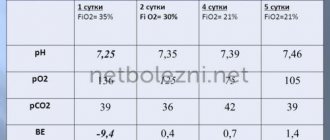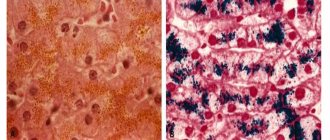From this article you will learn:
- why does the socket hurt after tooth extraction,
- what is alveolitis: photos and videos,
- How is alveolitis treated?
The article was written by a dental surgeon with more than 19 years of experience.
Alveolitis is a classic complication that occurs after tooth extraction and consists of the development of inflammation of the socket of the extracted tooth. Often alveolitis is also called “dry socket” (this is due to the fact that the alveolar bone in the depths of the socket is exposed due to the loss of a blood clot).
On average, alveolitis develops after tooth extraction in 3-5% of cases, but this applies to teeth of any location with the exception of wisdom teeth. When the latter are removed, alveolitis occurs in 25-30% of cases, which is associated with the greater complexity and traumatic nature of the removal process.
Dry socket after tooth extraction: photo
You can see what normal healing of a socket should look like (at different times from the moment of extraction) in the photo in the article: → “What a socket should look like after tooth extraction”
Causes of alveolitis
Fibrous alveolitis of the lungs develops for several reasons. These include:
- viruses that weaken the immune system, including cytomegalovirus, HIV, hepatitis C virus;
- external stimuli;
- hereditary factor;
- autoimmune diseases leading to a special form - autoimmune alveolitis .
All external causes or a genetic factor lead to the development of a primary pathology, but the disease can develop against the background of another pathology. Doctors note a connection with vasculitis, rheumatoid arthritis, and candidiasis. There is a high probability of pulmonary alveolitis with coronavirus , which occurs with complications.
Alveolitis with coronavirus: symptoms and treatment
Inflammation of the pulmonary vesicles develops against the background of viral or bacterial pneumonia. The infection, which initially affected the mucous membranes of the upper respiratory tract, freely descends below. The result may be pathological changes in the respiratory system.
Treatment in this case is selected depending on the type of complications. It should be aimed at eliminating the primary disease - coronavirus infection and its complications. For bacterial pneumonia, antibiotics are indicated; for viral pneumonia, antiviral drugs are indicated.
Solution
Such a diagnosis must be treated in time, then after a few days the person feels better. The process includes:
- removal of remnants of a blood clot, this is done under local anesthesia;
- processing the hole and its walls with a special tool;
- treating the hole with an antiseptic solution so that the infection does not go further;
- prescription of antibiotics;
- the use of drugs that relieve pain;
- rinsing the mouth, for this you should take antiseptic solutions;
- physiotherapeutic procedures that promote rapid wound healing.
In the absence of timely treatment, osteomyelitis of the jaw bone may occur.
Types of pathology
Alveolitis is a lung disease that can take different forms depending on its nature. They differ in clinical picture and require individual treatment methods in each specific case.
- Idiopathic pulmonary alveolitis . Also known as Hamman-Rich syndrome or interstitial pulmonary fibrosis. The exact reasons have not been established. It is rare and affects mainly men. In the early stages it is asymptomatic, in the later stages it provokes coughing and shortness of breath. If left untreated, it can lead to death due to respiratory failure.
- Exogenous pulmonary alveolitis , or allergic alveolitis . Provoking factors are external irritants - dust, plant pollen, fungal spores, which enter the body mainly through inhalation. It can occur in acute and chronic form. Symptoms of allergic pulmonary alveolitis in the early stages disappear when contact with the irritant is eliminated. In later stages, changes in the respiratory tract require therapy.
- Toxic alveolitis. According to the mechanism of development, it is similar to allergic alveolitis of the lungs, the symptoms and signs of which appear when exposed to irritants. In this case, the disease is provoked by exposure to medications, in particular drugs based on sulfonamide, some immunosuppressants, as well as chemical compounds - ammonia and chlorine vapors. Long-term exposure to toxins leads to the development of fibrosing alveolitis .
What can you do at home -
After the acute symptoms of inflammation have subsided, there is no need for antiseptic turundas inside the socket, because they do not help the wound to heal (epithelialize) faster. At this stage, the best treatment method will be to fill the hole with a special Dental adhesive paste (Solcoseryl). This drug has an excellent analgesic effect (after 2-3 hours the pain will practically stop, and after 1-2 days it will go away completely), and also speeds up healing many times over.
Scheme of use - this paste is added to a hole that has been washed with an antiseptic and slightly dried with a dry gauze swab (completely filling the hole). The paste is perfectly fixed in the hole and does not fall out of it. There is no need to remove the paste from the hole, because... it slowly dissolves on its own, giving way to growing gum tissue. The only thing that may be required is to periodically add it to the hole.
How to rinse the hole from food debris -
In some situations (when the turunda has fallen out of the hole, and there is no way to see a doctor right away), it may be necessary to wash the hole. After all, after each meal, the hole will become clogged with food debris, which will cause new inflammation. Rinsing will not help here, but you can easily rinse the hole with a syringe.
Important : from the very beginning you must bite off the sharp edge of the needle from the syringe! Next, bend the needle a little and fill a 5.0 ml syringe with a solution of Chlorhexidine 0.12-0.2% (it is sold ready-made in every pharmacy for 20-30 rubles). Screw the needle tightly so that it does not fly off when pressing the syringe plunger! Place the blunt end of a bent needle into the upper part of the socket (do not insert too deeply to avoid injuring the tissue), and rinse the socket under pressure. If necessary, do this after every meal.
In principle, after this the hole can be dried with a gauze swab and treated with Solcoseryl. We hope that our article on the topic: Alveolitis after tooth extraction, symptoms, treatment - turned out to be useful to you!
Sources:
1. Higher prof. the author’s education in surgical dentistry, 2. Based on personal experience as a dental surgeon, 3. National Library of Medicine (USA), 4. “Outpatient surgical dentistry” (Bezrukov V.), 5. “Propaedeutics of surgical dentistry” (Soloviev M. .).
Pulmonary alveolitis: symptoms and treatment in adults
Treatment tactics directly depend not only on the cause of the disease, but also on the clinical picture. Patients are prescribed medications that prevent the progression of the pathology, as well as eliminate unpleasant symptoms.
Main signs of alveolitis :
- Cough. Typically dry, with minimal sputum production. There are no impurities of pus or blood in the mucus discharge. Wheezing may occur.
- Dyspnea. In the early stages of diffuse pulmonary alveolitis, the symptom is disturbing only after physical exertion, so many patients ignore it. Further, shortness of breath occurs during short walking and at rest.
- Pain behind the sternum. Discomfort increases with deep inspiration, which disrupts the respiratory rhythm and reduces the concentration of oxygen in the blood. The pain may radiate under the collarbone.
Symptoms also depend on the form of the pathology. Acute pulmonary alveolitis occurs with a significant deterioration in health. The patient complains of muscle pain, fever, and fever. With chronic alveolitis, weight loss, swelling, fatigue, and pale skin are observed.
Features of the flow
Alveolitis comes in several varieties:
- serous;
- purulent;
- chronic.
The first form of the disease is manifested by intense aching pain, which is activated during eating. The patient's well-being does not change, body temperature is within normal limits. When examined, a dry socket after wisdom tooth removal either contains a partially destroyed blood clot or is completely absent. The wound may contain food particles and accumulated salivary fluid. Regional nodes do not increase in size.
Important! Serous alveolitis develops within 72 hours after tooth extraction; its symptoms may persist for at least 7 days.
When a wound festeres in the area of an extracted tooth, we talk about the transition of serous alveolitis to purulent. It, in turn, is characterized by constantly present intense pain, localized along the trigeminal nerve. The course of the disease is accompanied by a characteristic putrid odor from the mouth, patients begin to experience general weakness, malaise, low-grade fever, and the skin turns pale.
The wound should be “sealed” with a reddish-brown blood clot - this is a protective barrier that prevents infections from entering the hole
Pain syndrome accompanies the process of eating, soft tissues in the affected area swell, the face swells, becomes asymmetrical, and lymphadenitis is present. Due to pain, a patient with alveolitis cannot fully open his mouth.
A visual examination of the oral cavity reveals local hyperemia, swelling, a dirty gray coating with a putrid odor, and the remains of a blood clot in the socket. When pressing on the affected area, the patient experiences acute pain. The alveolar process thickens on both sides of the socket.
When inflammation becomes chronic, the pain gradually subsides, the lymph nodes “return” to “healthy” volumes, hyperthermia disappears, and the patient’s well-being returns to normal. An objective examination reveals large granulations in the injured socket. In this case, between these formations and the bone wall there remains a space in the form of a small gap. The empty socket is hyperemic and swollen, the surrounding mucosa has a characteristic bluish tint.
Important! Alveolitis is most difficult for patients with diabetes mellitus (due to problems with wound healing).
Diagnosis of alveolitis
To determine how to treat pulmonary alveolitis , the doctor must accurately determine the form, type and stage of the disease. At the initial appointment, a physical examination is performed. In the acute form, breathing is heard with characteristic wheezing, resembling a crackling sound. The percussion sound is shortened.
Recommended instrumental and laboratory tests:
- chest x-ray to determine the source of inflammation and assess the reversibility of changes;
- CT to detect pathology in the early stages with mild symptoms;
- spirometry to assess vital signs of the respiratory system;
- ECG to check the functioning of the heart muscle;
- bronchoscopy for differentiation from malignant neoplasms;
- clinical blood tests to assess the intensity of the inflammatory process.
Prices
| Name of service (price list incomplete) | Price |
| Appointment (examination, consultation) with a pulmonologist, primary, therapeutic and diagnostic, outpatient | 1750 rub. |
| Consultation with a candidate of medical sciences | 2500 rub. |
| Professor consultation | 4500 rub. |
| Consultation (interpretation) with analyzes from third parties | 2250 rub. |
| Prescription of treatment regimen (for up to 1 month) | 1800 rub. |
| Study of external respiratory function (RPF) with drug tests | 1800 rub. |
| X-ray of the chest organs (survey) | 1900 rub. |
| X-ray of the chest organs in 2 projections | 2900 rub. |
Pulmonary alveolitis: clinical recommendations
Symptoms of pulmonary alveolitis require treatment under medical supervision. The treatment regimen includes drug and non-drug therapy. First of all, patients need to eliminate the effect of the irritant if the disease is caused by exogenous factors. To improve the quality of life, the doctor will select a rehabilitation program based on physical exercise and oxygen therapy. After the course, the normal concentration of oxygen in the blood is restored, therefore shortness of breath decreases, performance and activity increase.
The prognosis for eliminating the symptoms of alveolitis will be favorable if the patient takes medications prescribed by a pulmonologist. For pathology the following are used:
- glucocorticosteroids to stop inflammation and relieve swelling;
- antifibrotic agents to protect tissues from irreversible changes;
- bronchodilators for better sputum removal and cough treatment;
- potassium supplements and diuretics to stabilize blood pressure and heart function.
In case of pronounced irreversible changes and ineffectiveness of conservative therapy, the patient undergoes organ transplantation. Indications for surgical intervention include a critical decrease in capacity, dyspnea, and oxygen deficiency. The prognosis for lung transplantation due to alveolitis is favorable. Survival rates reach 60%.
Reviews
I recently went to have my lower molar removed because all that was left was a stump that was no longer suitable for a crown. The removal went quickly and without almost any pain, they prescribed me to rinse my mouth and sent me to treatment at home.
The very next day, severe pain began in the place where the tooth used to be and the gums became swollen. Another terrible bad breath appeared. In the end, I came to the doctor who pulled my tooth the day before. She looked and advised me to “brace up” and apply a heating pad with ice to my swollen cheek. After a couple of days, the swelling subsided, but the gums did not hurt any less. I took Nurofen several times a day. But the pain never stopped, so I went to that aunt again.
They took a picture and told me everything was fine, but there were sharp bones from where my tooth used to be. So they decided to remove them. It was very painful when they picked at my gums again and removed these “bones”, then they put gauze, forced me to bite and sent me home.
Within a couple of hours, hellish throbbing pains began, so I decided to go to a nearby private clinic, where everything was explained to me. It turns out that my tooth was removed poorly, there were many pieces left from the destroyed tooth and bones from the jaw, so it all mixed with infection and produced pus. With an injection, they cleaned it all out with absolutely no pain, put a gauze pad with ointment on top and gave me recommendations. On the same day I felt better, so I didn’t go back to the doctor who removed my tooth.
Treatment of pathologies of the respiratory system in Kaliningrad
If you are bothered by a cough, shortness of breath, wheezing, or need a preventive examination, make an appointment with us for a consultation. The Pulmonology Center is staffed by competent, responsible and caring paid pulmonologists.
We offer:
- personal approach to each patient;
- rapid laboratory diagnosis of lung diseases;
- safe therapy at any stage of treatment: treatment of COPD, asthma;
- recovery programs, including rehabilitation after coronavirus in Kaliningrad.
Make an appointment at the Pulmonology Center by calling 8 (4012) 971-961.








